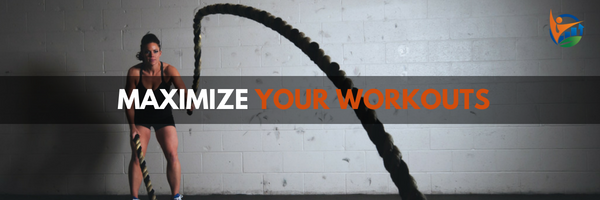It’s time to workout. Go big or go home. Right?
I’m a big believer in pushing outside that physical comfort zone. However, sometimes, less is more. On your down days, you need to check your workout intensity or you can do more damage than good.
Breaking It Down
When a person is stressed, the hormone cortisol increases in the body, giving a needed extra boost of energy to get through that trying situation. During stressful times, the body often needs more fuel than is readily available in the blood stream to deal with the stress. Cortisol helps to mobilize fuel through a catabolic (breaking down) process called gluconeogenesis. Let’s break down that word to better understand its role.
gluco = glucose/ sugar
neo = new
genesis = creation
So gluconeogenesis is the creation of new sugar, which is a fuel source for the body. Cortisol signals the liver to create new sugar from non-carbohydrate sources. Yes, it’s as amazing as it sounds! In stressful times, the liver breaks down muscle and that muscle protein is transformed to quick fuel.
Build & Maintain Muscle Mass
This is a great survival mechanism, but you want to avoid using muscle as fuel on a regular basis. Humans operate best when a high percentage of the body is composed of muscle. For example, good muscle mass keeps your metabolism high, meaning you burn more calories at rest. For this reason, if you want to drop weight, gaining strength is a really key step.
(Ladies, don’t freak out. Due to your lower levels of testosterone compared to men, you will not look like the Hulk if you work on improving your strength.)

Read Your Body
If you want to gain strength, increase endurance, balance weight, or build muscle mass, you need to take a calculated approach to your workout intensity level in order to avoid muscle loss. (Hint: You should want all these things because you will function better as a human, meaning less pain and more energy to enjoy life).
Maximize your results by learning to read your body. What is it telling you before, during, and after your workouts?
1. Before: Take away the crutches of stimulants (e.g. caffeine, sugar, and refined carbs) to get a true sense of your base energy for the day. If you feel great, push yourself in that day’s workout. If your tank is near empty, lower expectations of your body for that day. Make sure to move on those down days, but opt for a stretching session, a walk outside, or an easy swim instead of a high intensity workout.
2. During: Muscle fatigue and a nice sweat are positive indications you are pushing outside of your comfort zone. That’s good. However, if you feel dizzy, see stars, hit a wall/ “bonk”, or struggle to do a workout under 2 hours without intermittent fuel, stop and go eat some whole food carbs and protein. These symptoms are signs that the body burned through its fuel and it is tapped out of cortisol, the back up fuel support.
3. After: You should recover well after your workouts. Extreme exhaustion and intense muscle soreness are signs that you need to dial things back when working out until you rebuild your energy reserves (see tips below).
Action Steps
To increase energy before and during workouts and to improve recovery time, take the following action steps.
- Get good quality sleep. This is huge for rebalancing stress hormones, energizing the body, and improving muscle growth.
- Eat a whole food diet to provide ample fuel for the body. Eliminate the dietary stress of processed food, which burdens the body and impacts performance in all areas of life.
- Reduce or eliminate stimulants (e.g. caffeine and sugar) so that you can better read your body’s base energy levels, and therefore, pick an appropriate level of exercise for the day.

Leave Your Comments
blog comments powered by Disqus